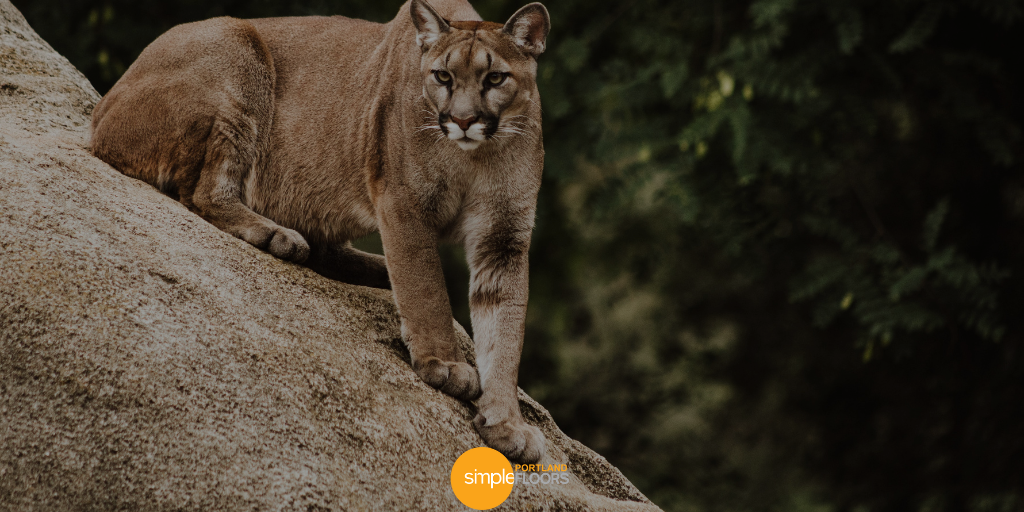In 1969, the American beaver became the official animal of our state. The beaver is a peaceful creature, with their dams increasing biodiversity and maintaining a healthy ecosystem. As we know, in our city, wildlife is plentiful in Portland. Not all creatures are friendly and docile like our state critter.
As the picturesque hiking season is upon us, not everything in our diverse nature of mountains, deserts, and dense forests are adorable beings. Some things bite, sting, and even eat us, leading to a whole world of unpleasantness.
Along with 139 species of mammals in the state, there are four native to our state not found anywhere else. These are the Portland animals to steer clear of while exploring the natural wonders Oregon has to offer:
Mountain Lion
Also known as cougars, these agile predators can grow up to three feet tall and weigh close to 220 pounds. Mountain lions are usually skittish and will hide from humans to prevent an encounter. Still, they have the potential to be aggressive, especially if they are taking care of their cubs and intruders have approached their den. Fortunately, only one death has occurred due to a mountain lion attack has been recorded in the past 20 years.
With numbers around 5,000, they are increasingly common around our metro area, even prompting our state to adopt a “Cougar Management Plan.”
Western Rattlesnake
As predators, these snakes venom is so powerful, that it can instantly kill rodents and amphibians. Growing up to five feet in length, rattlesnakes typically don’t release venom when it bites us. Because they can’t eat humans, these predators typically rely on their bite as a warning mechanism.
Rattlesnakes are the only venomous snake in our state. They consist of two subspecies, with the Northern Pacific variety found across our city and in the middle and southern parts of Willamette Valley.
Black Widows
Don’t reach into dark corners or crevices. A bite can cause fever, tremors, sweating, and other unpleasant symptoms.
There are three species of spiders in our state that can be very dangerous. Outside the Hobo and Yellow Sac, the Black Widow are the deadliest. Their bites can lead to abdominal cramps, nausea, sweats, tremors, fever, and labored breathing. Fortunately, less than one percent bitten by the black widow suffer anything deadly.
And did we mention that the Black Widow venom is incredibly painful?
Tick
Similar to any highly populated area located in a forested region, our state has a tick problem. In fact, Rip City is home to roughly 20 different species, but only four want to attach itself to us. These bloodsuckers wait at the top of tall grass for warm-blood individuals to pass by; they hitch a ride on flesh by clamping down with their jaws.
Only one kind of tick in our state carries Lyme disease. However, distinguishing it from the other three species that prey on humans is next to impossible. Only one to five percent of the western black-legged subspecies actually carries the bacterium responsible for Lyme disease; they must be attached to the host for 24-48 hours in order to transmit the bacterium to their human hosts.
Bear
There are 30,000 black bears roaming around our state. It’s the most common species in the country, however they have a wide range of colors including blond and cinnamon. Because we are encroaching their natural habitat, encounters between bears and humans have become commonplace.
In 2014, a mid-sized black bear was tranquilized after running willy-nilly in the Northeast part of our city. The bear scaled a tree and refused to come down. City wide ordinances have been passed to protect trash and lessen the likelihood of person/critter encounters.
Fortunately, black bears are shy and docile by nature. While there haven’t been any predatory bear attacks on people in our state, there have been reports of those bitten or scratched while the animal defends their cubs or food source.
Wolves
Of course, it’s wolves, because we’re in the Pacific Northwest. Actually, the wolf isn’t as common in our state as you would expect. Fewer than 150 gray wolves in 22 wolf packs are in Oregon at last count and are listed as a protected species under the Oregon Wolf Plan. Typically, they stick to the northeast corner, near the Washington and Idaho borders.
Don’t expect something out of a Jack London novel.
These mammals will only attack humans if they feel their pups or threatened or if they are acclimated to us. Basically, don’t feed the wolves; stay away from them and they will stay away from you.
Deer
This one is surprising.
Bambi, they are not.
Deer may look cute and innocent, but they are directly responsible for wrecking one million cars in our state yearly. In any place with lush forests, deer are typically ubiquitous. Don’t feed them. In Ashland last year, the problem with aggressive deer got so bad, that the mayor called a summit to discuss the issue.
Specifically, bucks are the aggressors, especially during the rut in October-November.
Every month it seems, our local news affiliates will warn residents across multiple communities to beware of the “aggressive” deer. Though people will only sustain injuries, household pets are common victims of being trampled or gored by a territorial deer.
If you do like being out in nature, even amongst the dangerous wildlife, CLICK HERE to read our blog about camping.









